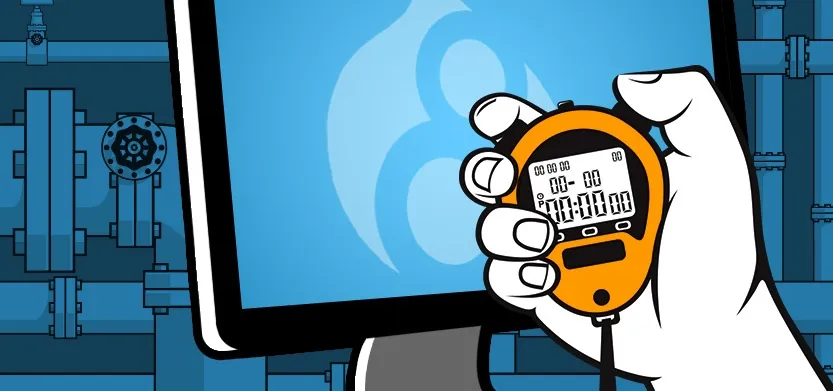
Posted in Digital Commerce, Drupal
February 10, 2016
BigPipe caching — Creating a better user experience
TL;DR: BigPipe caching is fast as f#@k (a.k.a. It’s really fast).
BigPipe caching at a glance
Waiting for a web page to load is a tiresome process — and a waste of time. Thankfully, there’s BigPipe caching, a technology that significantly reduces the time it takes for dynamic web pages to load.
BigPiping — pioneering by the folks at Facebook — allows static sections of a dynamic site to load in chunks users can view while dynamic sections load in the background. The result is websites that load — or appear to load — almost instantaneously.
Static content, for those who are unsure, is content that remains unchanged and includes things like logos and headers that are stored (cached) for instant retrieval. Dynamic content — including social media and ecommerce features — changes constantly and cannot be cached (or stored).
What BigPipe does is load and store cacheable parts of a dynamic site while uncacheable parts are loading. This significantly reduces the time it takes for pages to load and improves the user experience.
The time it takes for a page to appear on the screen (something called page load) remains unchanged, however, the time it takes for a page to become usable is significantly reduced. You can read all about it here. BigPipe for Drupal 8 works in the same way; delivering lightning-fast web pages.
BigPipe caching FTW

The animation above demonstrates BigPipe caching of a typical ecommerce product page. Studying the image, you’ll notice that the standard page takes a long time to become clear. This represents the time it takes for the page to load and become usable. In contrast, the BigPipe page has cached elements, shown in blue, which become clear almost immediately. The user can view and interact with these elements right away. The dynamic elements, continuing to load in the background, still take the same amount of time to load as the standard page, however, most visitors won’t even notice the additional loading. They’re already looking at the cached elements, deciding what to do next. This is a huge benefit for users who demand performance and don’t like to wait.
The benefits described apply to the entire ecommerce website, whether it’s the homepage, product catalogue, during checkout, or virtually any other page you can think of where cached and dynamic elements are used together. It’s a win no matter how you look at it.
So, why is there loading time anyway?
In the dial-up days, pages loaded slowly because network connections were slow. Today, dial-up has gone the way of the dinosaurs but web pages are more complex and take longer to load.
BigPipe caching was developed to solve this problem.
Moving forward
BigPipe caching is just one of the numerous technologies we at Acro Commerce stay on top of to benefit our ecommerce clients. As bigger and better solutions come out, it is our number one priority to implement these technologies to create the best possible user and omnichannel experiences on all of our client's websites.
Make sure to check out our video to learn more.

